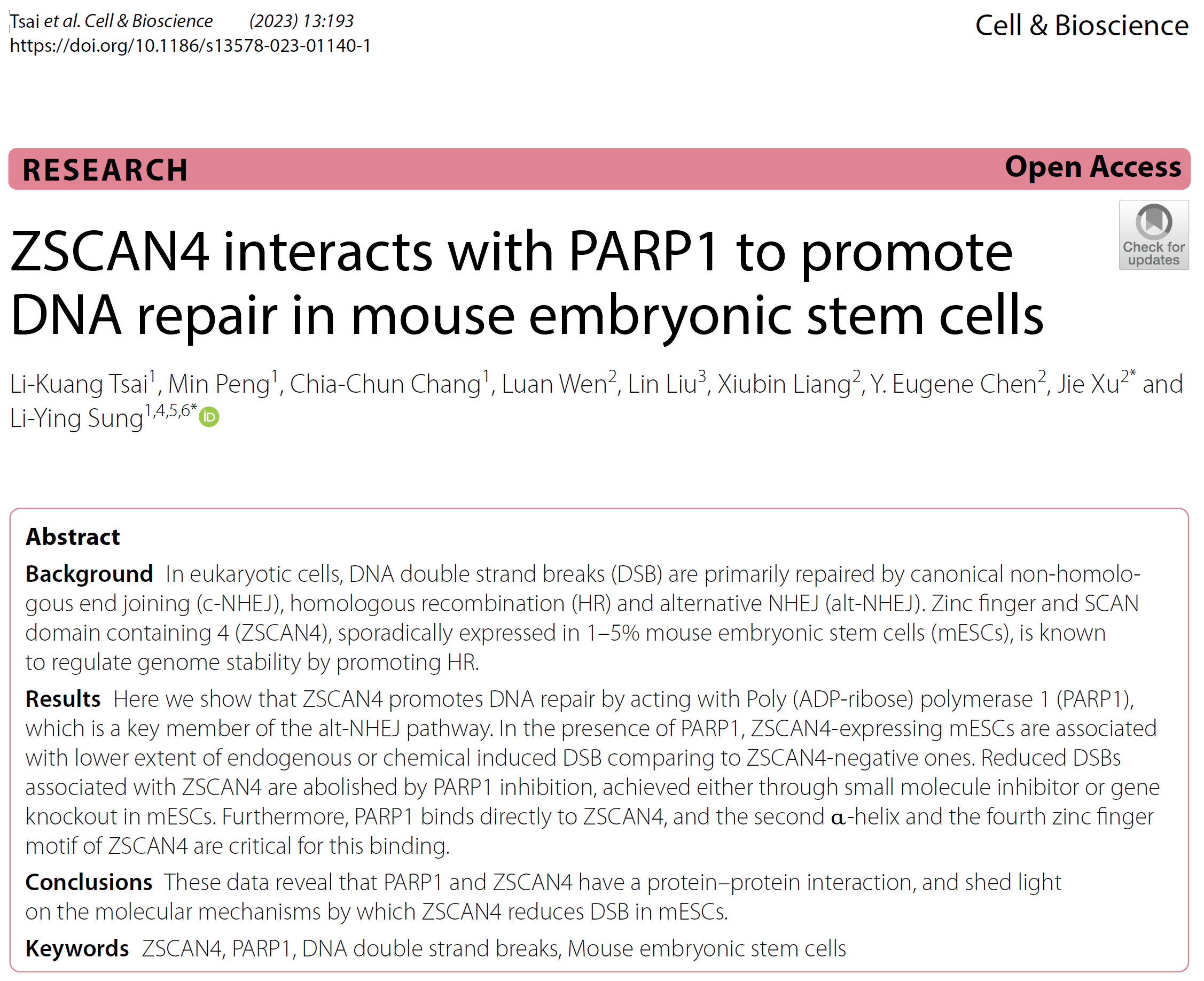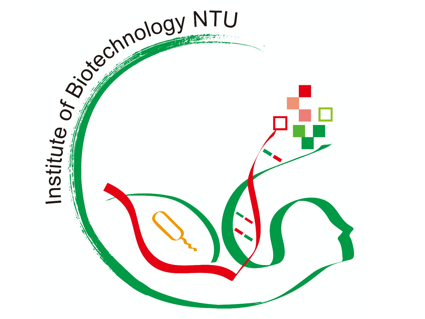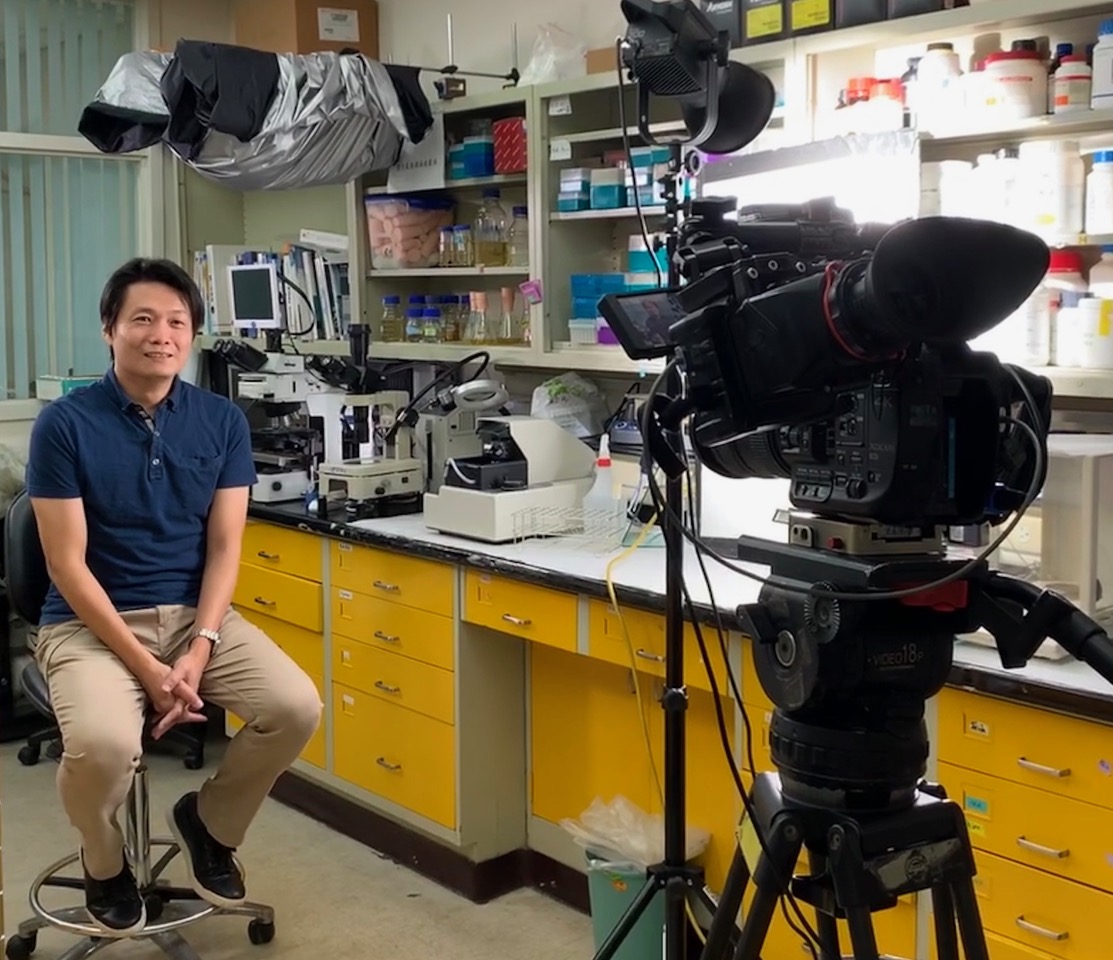ZSCAN4, as an alternative lengthening of telomere (ALT) pathway activator, has a high potential for developing strategies to treat Telomere syndrome. However, although Zscan4 has been reported for more than a decade, the molecular mechanism is still unclear, which directly hindering the clinical and research application of ZSCAN4. Ph.D. student Li-Kuang Tsai, the lead researcher in this international collaborative project, discovered a crucial interaction between the key DNA repair protein PARP1 and ZSCAN4, moreover, Tsai's research revealed that the second alpha-helix and the fourth zinc finger motif of ZSCAN4 are essential interaction motifs to interact with PARP1 protein. These sites are crucial for ZSCAN4's involvement in DNA double-strand break repair. These results have been published in the prestigious SCI journal, Cell and Bioscience (Impact Factor 7.5 in 2022) (Tsai et al. ZSCAN4 interacts with PARP1 to promote DNA repair in mouse embryonic stem cells. Cell & Bioscience, 2023 Oct 24;13(1):193. doi: 10.1186/s13578-023-01140-1), serving as a significant encouragement to the international collaboration team.
In the subsequent research, Li-Kuang Tsai discovered that PARP1 is also involved in the mechanism of ZSCAN4 in elongating telomeres in mouse embryonic stem cells. The completion of this study not only establishes the connection between ZSCAN4 and the key DNA repair protein PARP1 but also contribute to the future development of strategies focused on ZSCAN4 for Telomere syndrome treatment.













